- 6
The Canadian Rockies - Home of the Death Race
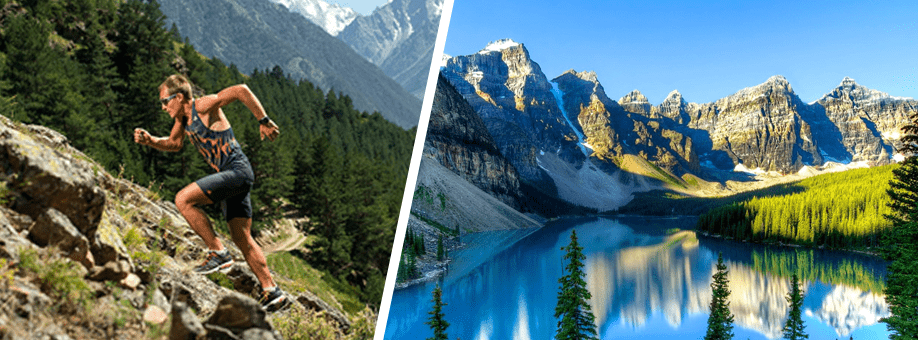 Facts and Stats:
Facts and Stats: - The race was established in 2000 and is held in August every year.
- It's a 125km foot race that includes three mountain summits and a large river crossing.
- Participants will experience 17,000 feet of elevation change.
- The race takes place over four days.
The Canadian Rockies comprise some of the prettiest parts of the country, and are studded with provincial and national parks, many of which are combined into a World Heritage Site. It's a place of fresh air and amazing views, where you can reconnect with nature and get some exercise after playing at online casinos in BC (whether light or strenuous). But it's also the home of one of the most notoriously arduous sporting events in Canada: the ominously named Death Race.
Marathons have been one of the sternest tests a runner can face ever since the eponymous battle in Greece millennia ago (and the poor sod who had to carry messages for prolonged distances on foot). But for those elite athletes (or perhaps masochists) for whom 26.2 miles seems a bit too easy then the ultramarathon is the running event of choice. Technically an ultramarathon is any race beyond the distance of a marathon, but some are immense, as is the Death Race, which goes on for 125km in the Canadian Rockies.
Starting on a 4,200 foot plateau, this lung-bursting, knee-nobbling course combines glorious vistas with tortuous ascents. Not one but three mountain summits are encountered along the course. The undulation of the 'track' involves over 17,000 feet in elevation changes. The significant altitude makes the race even harder for the athletes mad enough to give this race a crack, but at least there's a lovely river crossing that should prove refreshing.
The duration of the race is 24 hours, with entrants, both male and female, coming from around the world. There's also a smaller version, which is a mere 42km. - 5
Ski Hard at the Red Mountain
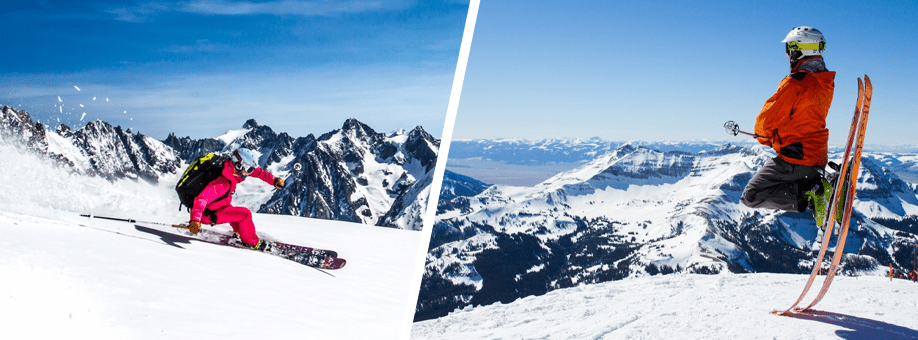 Facts and Stats:
Facts and Stats: - There are 119 marked trails for intermediate/advanced skiers.
- Red Mountain has 5 different peaks to experience.
- There is a total vertical drop of 2919 feet.
- Each year there is approximately 750cm of snowfall.
Whether skiing or snowboarding is your preference for rapid mountain descents, Canada's toughest sporting terrains include peaks aplenty where you can try and stay on your feet as you hurtle down the slopes. Downhill skiing, or snowboarding, is inherently dangerous because even if you're moving slowly, a hidden rock can cause problems and even a small fall can have severe consequences. And if you have an argument about right of way with a tree there's only ever going to be one winner.
And that's where Red Mountain comes in. This isn't just another place to go for a relaxing ski. This is one of the greatest locations not only in Canada but the whole world for very, very steep slopes and incredibly swift descents. For beginners this mountain's toughest slopes are not.
In fact, many consider Red Mountain to be too dangerous, and if you ever think about visiting to try it for yourself please only do so if you're extremely well-versed in skiing/snowboarding. Beyond the obvious challenge posed by the severity of the slope, other tests include numerous cliff drops and a labyrinth of trees that make it easy to lose your way (and difficult to repeat the same route twice).
But it's only the greatest pressure that's capable of producing diamonds, and this toughest sporting terrain in Canada has bred many a champion. Nancy Greene won an Olympic gold medal in 1968, and it was Red Mountain where she grew up and learned to ski.
However, in more recent times the resort has become a bit friendlier towards novices, with the creation of altogether easier skiing opportunities on the lower slopes. This is great for couples who have different levels of skiing experience, as Red Mountain's main attraction of unrelenting difficulty is not something to inflict on a newcomer to the sport. Otherwise those new to skiing will have to chill at the resort and play at no deposit online casinos. - 4
The Yukon River Quest
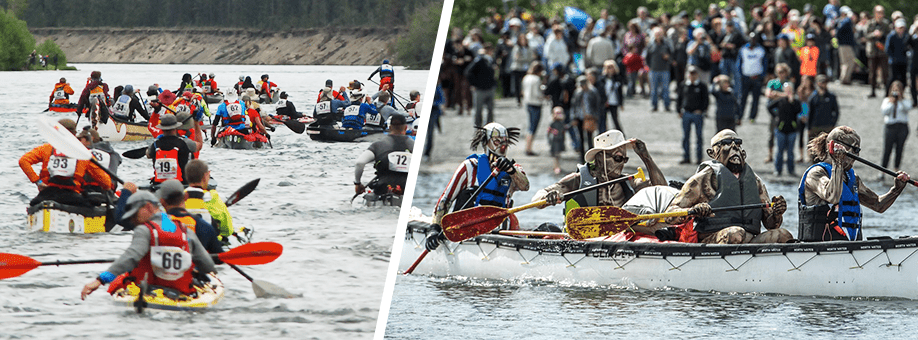 Facts and Stats:
Facts and Stats: - This is the world's longest annual canoe, kayak and SUP race.
- The race covers 715km and must be completed within 85 hours.
- It is an international event and in 2016, 14 countries participated.
- There are six checkpoints that participants must clear.
Watery adventures, delightful landscapes, and a serious workout await those who embark upon the Yukon River Quest. People whom all over Canada, including Quebec and Ontario, as well as worldwide participate. The origins of this event go all the way back to the 19th century Klondike Gold Rush, and the time of year is critical the spirit of the Yukon River Quest (also known as YRG for short). Because the northern sky does not get dark when the event is held, paddlers can have the unusual experience of being on the river 24 hours a day.
The journey is long and intense, with the wilderness a key aspect. Competitors will see relatively few other people for prolonged periods of time as the river cuts through pristine wilderness. Nor is this a pleasure cruise, with the organisers urging teams to bring sufficient supplies for several days, just in case anything goes awry.
Paddling might not sound too strenuous, especially compared with racing downhill at Red Mountain or running up multiple mountain peaks in the Death Race, but bear in mind this: the YRQ's official list of things that can go wrong include both hypothermia (caused by rain) and hyperthermia. Dangerously low and dangerously high temperatures in the same event is extreme indeed. And most other events in this article don't have official guidance that a sleeping bag and tent may be essential for safety.
The race route takes the river, and competitors, through a quintet of First Nations' territories, namely Kwanlin Dun, Ta'an Kwachan Council, Little Salmon/Carmacks, Selkirk, and Trondek Hwechin. There's a variety of different competitive categories, including canoes and kayaks (solo or tandem), and larger canoes. But whether alone or with friends, this is one of the toughest sporting terrains in Canada. - 3
MEC Ottawa Gatineau Park Marathon
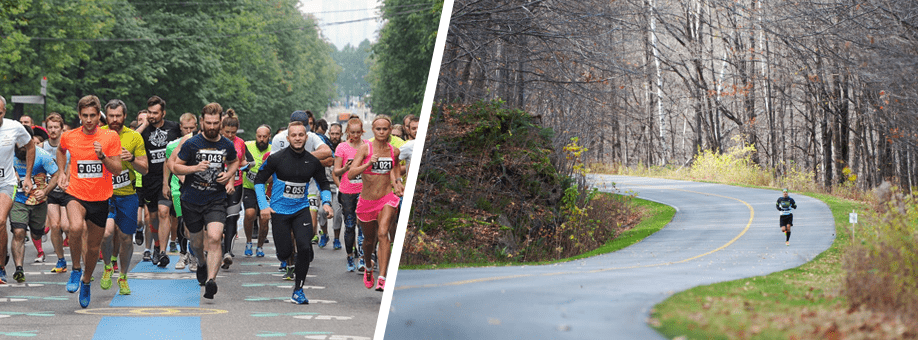 Facts and Stats:
Facts and Stats: - Gatineau Park offers great year round activities - cross country skiing to hiking.
- The Gatineau Park Parimeter Loop is a 111km trek with 3,200m of climbing.
- The marathon takes place on roads of the park.
- The park was established back in 1938.
Compared to mountains, rivers, alarmingly steep slopes, and the risks of hypothermia, a marathon in a park might not sound like a candidate for one of the toughest sporting terrains in Canada. But this knee-destroying monster of elevation changes will beg to differ, and anyone who rolls up to race unprepared is in for a world of pain.
The hills are the defining feature of this race, which can be run as either a full marathon or a half-marathon in a loop around Gatineau Park. It's not, therefore, one of those circuits designed to appeal to runners seeking to better their times with a nice, flat layout. Instead, runners are put through their paces with steep and numerous elevation changes (1,000m worth of up and down). This makes it perhaps the single toughest marathon in the whole country.
And while knees may groan in protest, eyes at least have a feast to behold in Gatineau Park. It's not only the site of the strenuous marathon outlined above, but of cross-country skiing, treetop obstacles and ziplines, and cycle trails to test the lungs and legs of bikers. Pink Lake is, unexpectedly, bright green due to the algae within, and rare ancient trees make their home on the hills and mountains. And you might even bump into wolf packs or black bears if you stray too far off the beaten path. - 2
The Baden-Powell Centennial Trail and the North Shore Mountains
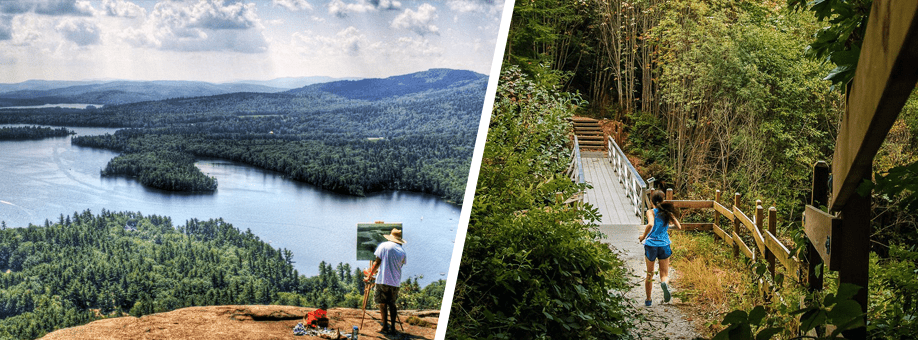 Facts and Stats:
Facts and Stats: - The Centennial Trail is 48km long and covers western and northern Vancouver.
- Those who complete the trail will summit Black Mountain which is 1217m high.
- The trail was created back in 1970 to celebrate 100 years of BC's entry into Canada.
- Several races are performed over the Baden-Powell trail.
If the name rings a bell that's probably because this trail (a little longer than a marathon in length) was named after the founder of the scouts, Lord Baden-Powell. Along this 50km or so of trails there is a wide range of landscapes that are lovely for the eyes but less welcome for the feet (and knees). Here and there you'll encounter pavement, but for the most part the trail wends its way through forests.
To paraphrase the soccer cliché, it's a trail of two halves, and the eastern side is altogether easier. Go west, and you enter the mountainous wilderness. Incidentally, there's a narrow bridge over the Seymour Canyon, which might prove a test of spirit for those scared of heights. Other obstacles include rocks along the trail, and a foe familiar to those who know forests well: roots melding into the soil and being hard to spot and easy to trip over.
Sights along the way include the popular suspension bridge within Lynn Canyon Park, and the Cleveland Dam. Ancient trees soar from Hollyburn Mountain's slops, and there are fantastic panoramic views from Black Mountain. But after this wonderful sight hard work and a tough descent are in order, with 1,000m of declining elevation. Going up and over a quartet of mountains makes this a challenging yet compelling course, a highlight of the toughest sporting terrains in Canada. Multiple races are run here, including the Vancouver 100, which fancies itself The Hardest 100km Trail Run Anywhere. Or you can stroll at your leisure, and even take a four-legged friend (if you keep him on his leash). - 1
Head to the Arctic Circle for the 6633 Arctic Ultra
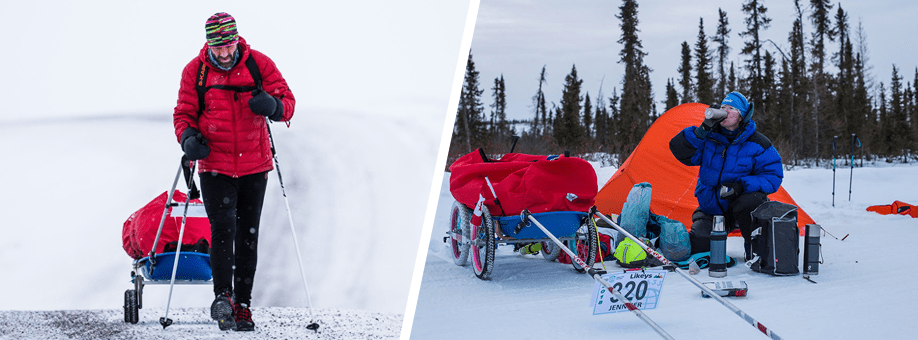 Facts and Stats:
Facts and Stats: - Participants have a choice of a 120 mile or 380 mile race.
- Fewer than 30% of competitors typically finish the 6633 Arctic Ultra.
- The 380 mile race takes place over a maximum of 8 or 9 days.
- Participants need to be very self reliant for the ultra marathon.
We've already covered some of the most stunning yet challenging landscapes, but when it comes to the toughest sporting terrains in Canada it's hard to beat the stark reality of the Arctic Circle. Widely considered to be not only the coldest of races, but also the windiest, the 6633 Arctic Ultra promises to put every single entrant through the absolute ringer. Only the toughest need apply to what might be the single harshest racing environment in the world.
That's not to say there won't be some warmer moments, such as when the race passes through First Nations Hamlets where you can meet the famously amicable residents. But for the most part this is a true athletic challenge. The race is non-stop and comes in two varieties: gruelling, and very gruelling. The short version is a mere 120 miles. But if you want to go all in (and have a superhuman level of fitness and determination) then sign up for the 380 mile version.
The start might not seem too bad, with a gentle descent, but you'll be in Hurricane Alley before you know it. Here the Katabatic winds blow strongly enough to knock over lorries, and if the tempest comes then wise competitors may drop to their hands and knees and literally crawl to avoid being swept away.
How cold does it get? Well, the mandated sleeping bag (just one kit item runners must have with them at all times) has to be rated for conditions of at least -35C (that's -31 in Fahrenheit). Extra food, fuel, clothing, and batteries (weight not exceeding 10lbs) can be available for long course runners at two points, but otherwise you've got to handle the freezing temperatures, gale force winds, and extremely long course all on your own. In short, the 6633 Arctic Ultra makes almost everything else look like a picnic. In 2019, there were 16 long course competitors. Just six made it to the end.
That just about covers the toughest sporting terrains in Canada, from relentless rivers and perilous ski slopes to ultramarathons over mountains, and the positively lunatic running (or crawling) race of the 6633 Arctic Ultra. If you are thinking of trying one of these for yourself, do remember to train hard and follow the safety instructions.

